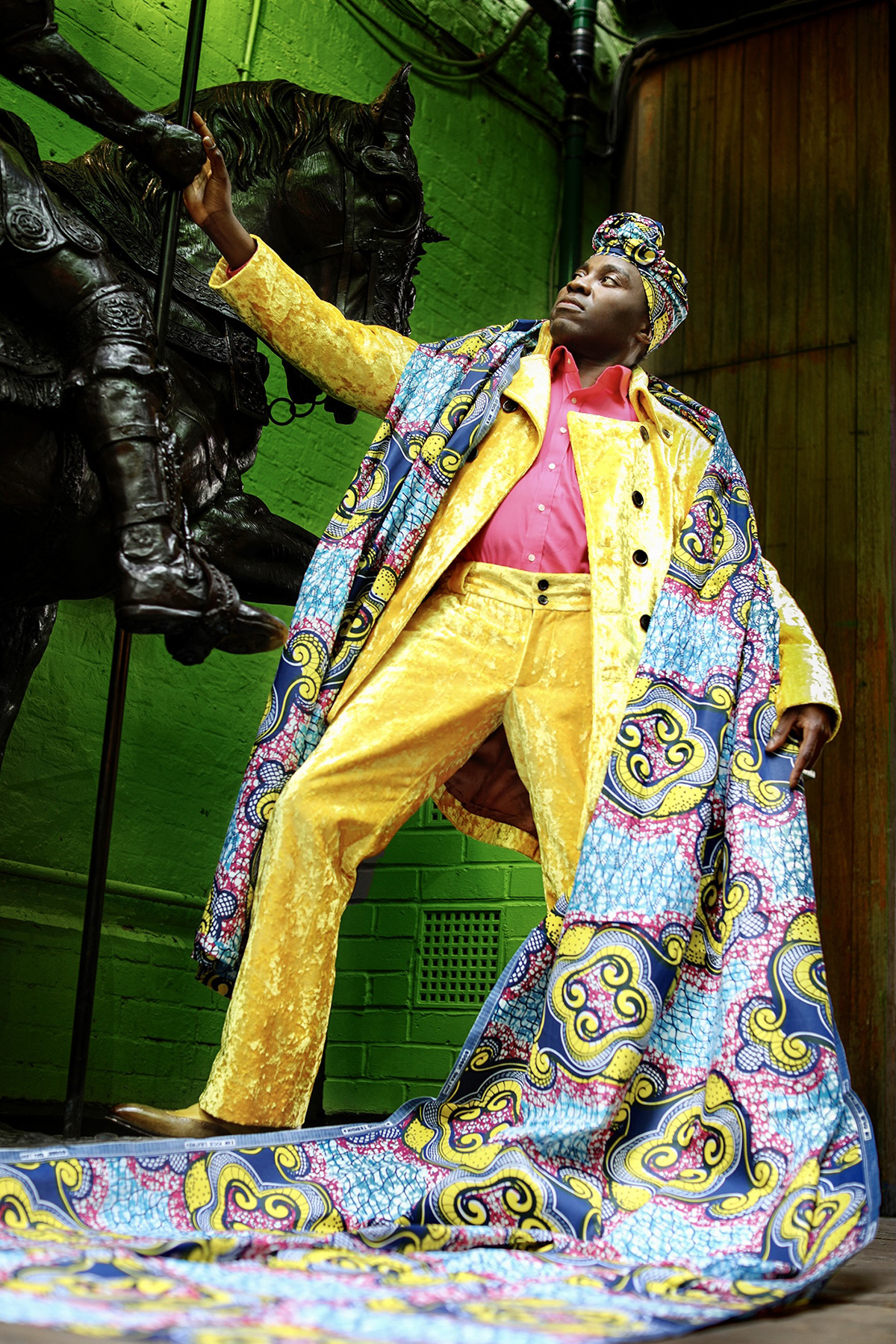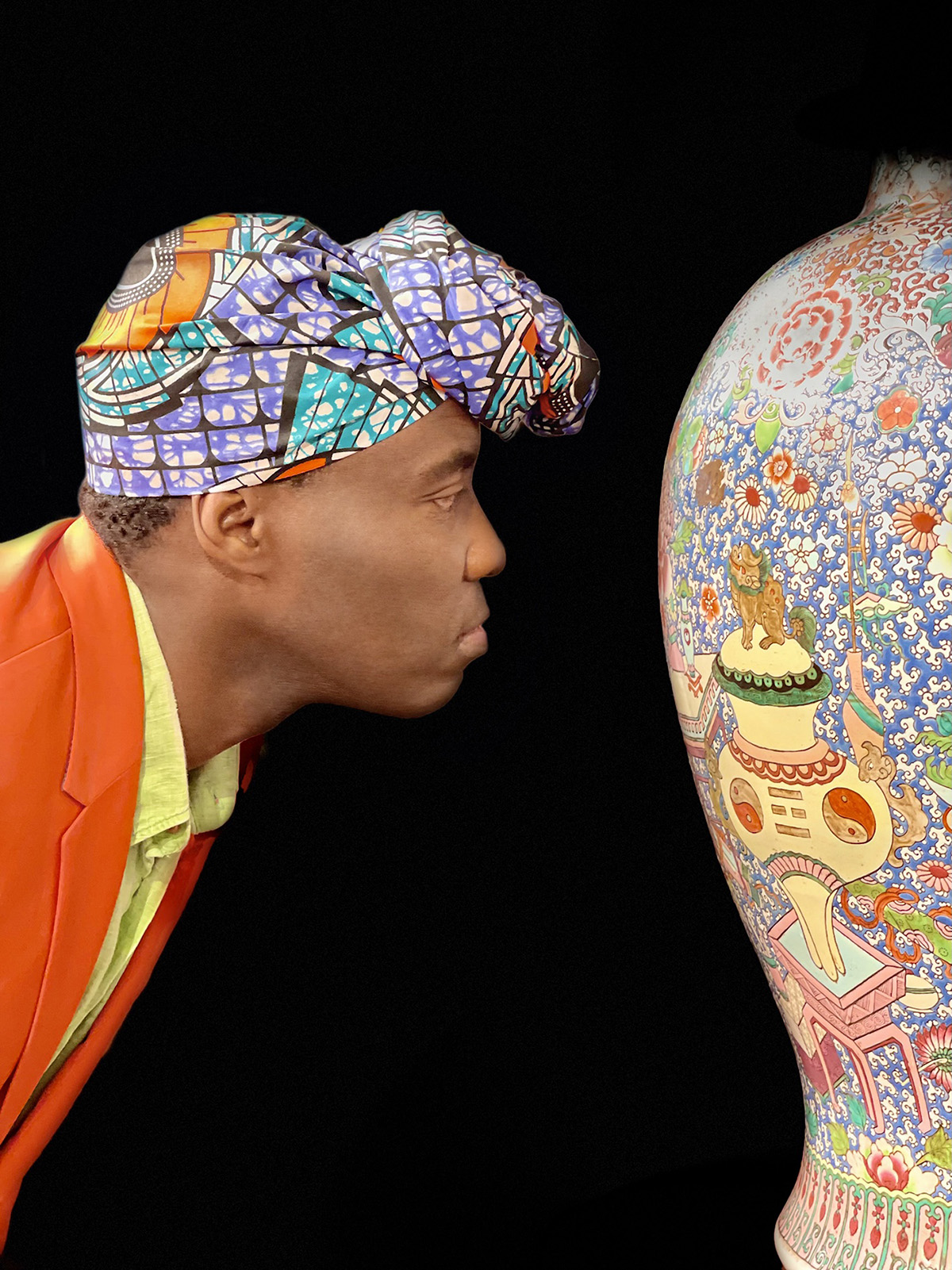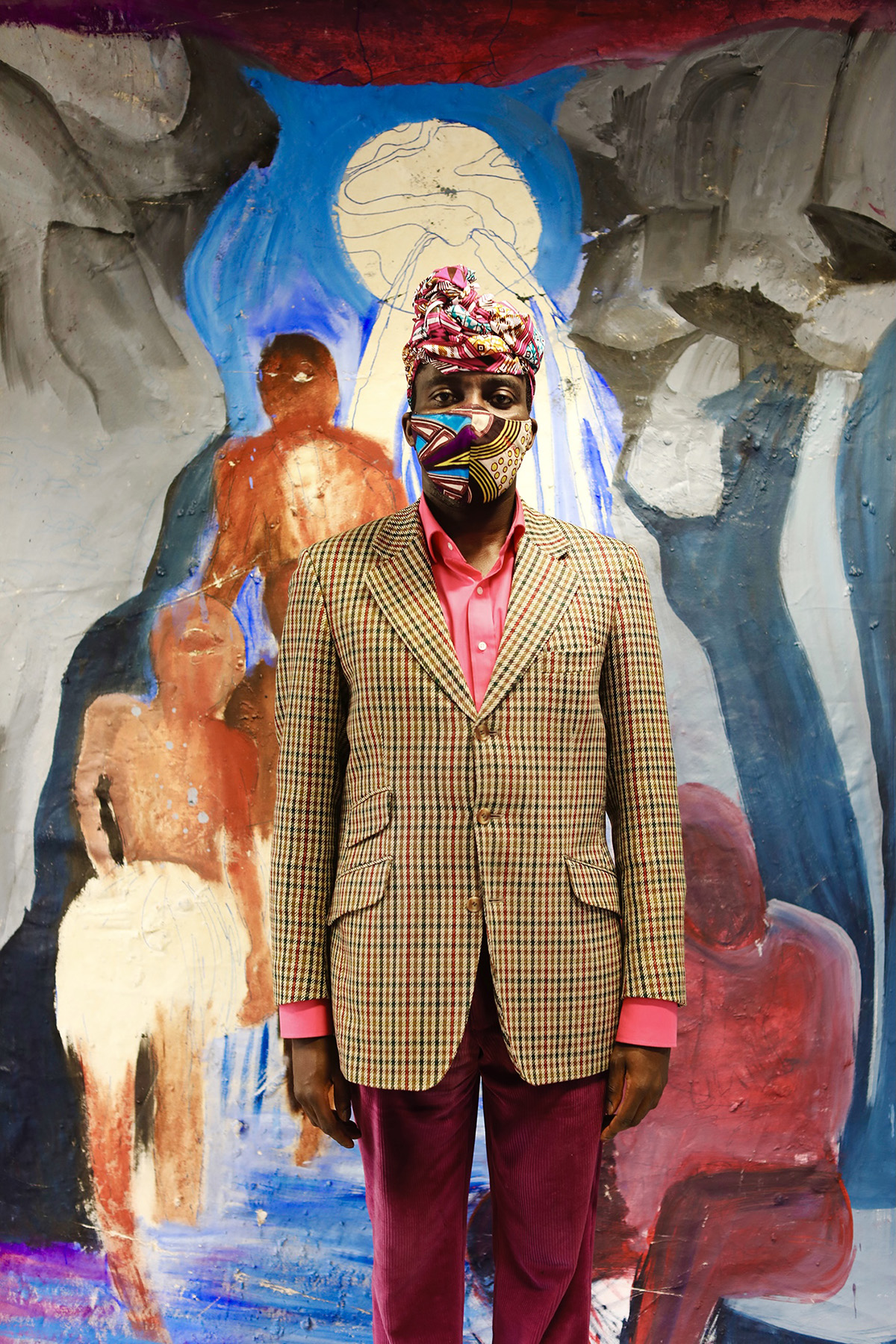
‘My path is full of petals- I have not swept it for others.’ Image courtesy of Sol Golden Sato
Born in Malawi, Sol Golden Sato is a London-based artist who incorporates philosophy into his paintings and sculptures. Here, he speaks to LUX Chief Contributing Editor, Maryam Eisler, about the connections between identity, place, community and art
Maryam Eisler: How would you define your identity Sol?
Sol Golden Sato: I came to London from Malawi on my twentieth birthday. I had a strong Malawi and African identity but I wasn’t really political, even though I had left because the politics had changed so much. I came to London and instantly found myself working as a commercial migrant. That was my first identity crisis. Living in Brixton in rented accommodation… I think I was paying around £25 a week rent, with no heating. I was really enjoying it at such a young age. I stayed there for four or five years and I found myself doing other jobs. I had never really thought of my identity in that sense at that point. I think it was only when I personally started changing, in particular when I started identifying more as a Londoner, that I began thinking ‘how do I or should I actually present myself’ ?
Maryam Eisler: The concept of being a ‘Londoner’ is interesting. Talk to me about that.
Sol Golden Sato: It all lies in the nuances. I want to be known as an international artist or a London artist or better yet, a London-based artist, who tells stories of my life here in London whilst equally referencing my experiences growing up in Malawi. It is no longer a conundrum; rather, it is normal for somebody like me in London, to have moved around a great deal and become malleable with the definition of one’s own culture or cultural identity.

‘One message from home is wroth a ton of gold.’ Image courtesy of Sol Golden Sato
Maryam Eisler: Do you think you have had to sacrifice certain parameters in order to fit in? Or has it been a a seamless integration?
Sol Golden Sato: It is never seamless. I spoke to someone who was a diplomat at the time, and he said ‘you have to soften your edges so that you can walk into a room, not be what they want you to be, and yet be able to connect with a variety of people from the perspective of their point of view rather than your own.’ When you are in a diaspora, you soon learn how to be diplomatic.I see so many displaced people here and they all have something important to contribute to the conversation in this forever changing world. You may lose on some points but you definitely gain on others. And sometimes, you may just forget the environment you grew up in altogether. In my case, I have not spoken with anyone from Malawi for all this time, so I have forgotten most of the language, which is quite a painful and sad process. At the same time, I have spoken to psychiatrists and speech therapists and they all say ‘You will remember it as soon as you go back’. How is it possible that your brain can and will switch off bits of you altogether over time?
Follow LUX on Instagram: luxthemagazine
Maryam Eisler: I would even push you further by saying that you are not a London artist, but rather a Chelsea artist, given that the Kings Road in particular seems to be home to your studio but also to your public art.
Sol Golden Sato: Yes, it is one of those things, when for years, I didn’t quite realize how much I was presenting within and giving back to the Chelsea community just by being in it. I think the history of the Kings Road and the manner in which I like to dress somehow connect with each other. I think place has both a psychological and a spiritual identity and it is something that I try and seek in other places too. When you invest yourself in a community and find out what that community’s identity is all about and how that relates to you, you can then, and only then, make it. The Kings Road is where I have learnt those principles actually. I have also done projects near the Portobello road, and I instantly found a way of connecting with people through the Grenfel community but also through the Notting Hill Carnival… with a particular interest in trying to understand how different cultures live together amongst themselves, but also side by side with other communities.

‘You have been in my dreams, old friend- I miss you.’ Image courtesy of Sol Golden Sato
Maryam Eisler: You have an amazing way of tattooing yourself on the walls of these spaces and places because, even though you have a studio you are also very present and visible on the street. You have somehow managed to integrate the outdoor skin of these communities.
Sol Golden Sato: Yes, it is something that did not start with an ideology, just “Oh, there’s a piece of wall, we could do something there”. But now I am starting to see it as a mission: that the artist should always be present, not just where they live but where they are. I have been following a number of people who want to activate communities, especially via the act of making art. I did this in Portobello and I am trying to do these activities in other centres and gardens now too. Sometimes the local people can’t do it on their own, and it takes a cultural activator to come in and say, “I see this, we can do this” and then it is a way of tattooing culture into a place, like a renewal of some sort.
Maryam Eisler: We should open minds at a young age as opposed to allowing brains to be imposed upon by tradition and old world thinking, would you not agree?
Sol Golden Sato: Yes. When we were doing this project in Notting Hill, I had forgotten my brushes so I thought I would just pour paint on canvas and move it around with my feet. The kids said, “You’re dancing ! We want to dance on the canvas too !” Now I am talking to some people in Nine Elms, where the Battersea Power Station is, asking ‘ Why don’t we do a large, forty-metre-long dancing painting where you get all the kids involved together, side by side’. It is another way of activating a community that is continuously and radically changing at a fast pace.

‘Wind, light and time ever revolve; Let us then enjoy life as best we can.’ Image courtesy of Sol Golden Sato
Maryam Eisler: What are the types of topics that interest you when making your art? What are your paintings inspired by?
Sol Golden Sato: My art still goes back to stories coming from people, almost all relate to time and place, and more often than not, to very specific times in history.
Maryam Eisler: Can you talk to me about your interest in the iconic gangsters, the Kray brothers and their trip to Nigeria as depicted in your current work- in-progress painting ? In a way, it is a perfect example of you linking two continents, but more importantly linking a very London story to stories elsewhere.
Sol Golden Sato: Yes, Northern Nigeria 1964; I found a little document in the form of a photograph and I just asked the question: what were the Krays doing there and most importantly, how did that trip affect them or better yet, did it affect them at all? From there, I linked other more universal questions about how different cultures communicate or connect with each other. If I were to say, “let’s look at black African migration in the East End of London,” it would be an equally interesting subject, but if we look at it from the cultural phenomenon of the Kray brothers, that is so much more interesting and potent to me.

‘It’s all one single grief.’ Image courtesy of Sol Golden Sato
Maryam Eisler: You are always attracted to and explore the same kind of topics but you treat them from different perspectives?
Sol Golden Sato: Yes. Certain subjects I strongly feel should be portrayed through paint and others might be more cinematic in nature, like the story of the Kray brothers. I am also starting to learn that some thoughts can be better communicated through public art installations and others are better suited to a gallery presentation. That’s how you engage different and wider audiences.

‘Could I get mansions covering ten thousand miles, I’d house all the poor.’ Image courtesy of Sol Golden Sato
Maryam Eisler: Today, you have enveloped your own body in these beautiful, lush and colourful fabrics; I am assuming they are of African origin? You are using your own body as artwork and communicator of ideas.
Sol Golden Sato: Yes. It is interesting to see how different people do it. In my case, I have always liked and been inspired by Salvador Dali, mythologising himself and creating something beyond his own immediate persona. The fabrics I am using today are originally Dutch fabrics that were developed and designed for local flavour. As such, It is also interesting to study how trade and culture work together. One of my heroes or idols is Quentin Crisp. He used to get frequently beaten up for being effeminate, so he decided, to wear make-up so it was easier for people to know who he was.I like that because it is actually quite inclusive, being different and making people come up to you and ask questions.
Read more: Michael Xufu Huang on Arts Philanthropy & Making Art More Accessible
Maryam Eisler: I suppose it is a visual cue that attracts people, the same way you caught my attention whilst crossing the Kings Road?
Sol Golden Sato: Yes, it attracts. Sometimes my rule is to just be the opening and see what happens from there. Sometimes it’s brilliant. I have had some funny moments: a football fan started a chant saying “who brought the pimp.” You can interrupt normality.
Find out more: solgolden.com








